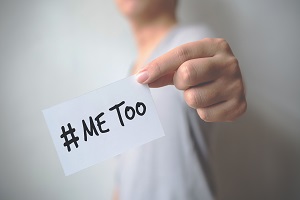The #MeToo movement threw the whole country for a loop, but no one more than HR and employee relations managers. Human Resources generally investigates claims of sexual harassment, but many companies had been doing a poor job of this. While most of us don’t have Matt Lauer types lurking in our cubicles, there are plenty of people who didn’t come forward to HR — or who came forward and were ignored — for fear of messing with the star players.
So did the advent of the #MeToo movement have any impact in changing all that? Did employees feel confident coming to Human Resources to make a complaint? Did your company change how they responded to accusations? HR Acuity asked HR leaders to find out in its groundbreaking #MeToo in the Workplace special report. Keep reading to learn what the study uncovered.
Sexual Harassment Reporting Is Up
Fifty-three percent of businesses reported that after #MeToo began in 2017, their reported sexual harassment cases went up. Only four percent saw a decrease. If this were random, you’d expect a pretty even split — after all, nothing stays the same year after year.
While these businesses don’t have specific information on why reporting increased, we do know that awareness of sexual harassment was at an all-time high. We also saw how powerful people were taken down after harassment allegations were pushed to the forefront.
It may be a good sign if you had more reports in the past year; it shows that people are speaking up. The sooner you find out about bad behavior, the easier it is to stop it and fix the problem.
Companies Are Changing as a Result of the #MeToo Movement
It’s not business as usual anymore. Fifty-five percent of companies have made changes or plan to make changes to how they handle and talk about sexual harassment after the global impact of the #MeToo movement. It’s clear that there is a big problem in the United States, and the only way to fix harassment at work is to change the work environment itself. That’s what companies are doing.
While HR leads almost 70 percent of the change (35 percent led by the Chief Human Resource Officer, and 34 percent led by the Director of Employee Relations), they aren’t doing it alone. This is no longer a back-office, HR-only problem. Seven percent of companies have the CEO leading the charge for real change. When it comes from the higher ups, you know it’s serious.
What do the changes look like?
Sixty-nine percent of companies have either initiated or enhanced how their executives respond to complaints or are planning to make those changes within the next year. How leadership acts is key to achieving success, as Human Resources never has the final say. You can have the best HR officers in the world, but if the CEO ignores their recommendations, it doesn’t matter.
Seventy-six percent of managers and 72 percent of employees have either received new training or will receive training within the next year. That can make a huge impact. When employees understand not only what crosses the line but what to do if it happens to you, you’ll see real change.
Investigation skills training, unconscious bias training, and bystander training all see a big jump in the workplace, with close to half of companies making changes in these areas. It’s not enough to take the word of whoever complains: you need to investigate accurately.
Unconscious bias training (if done properly) can open people’s eyes to the idea that they might be behaving inappropriately. Additionally, changing the thought that “as long as it’s not happening to me, other people must be okay with it,” can make a serious impact as well. It’s scary to come forward when something bad happens to you, but bystander training can help someone speak up and defend a victim.
Companies Are Starting to Track Metrics
If you only deal with each harassment case as it comes up, and then close the file when it’s resolved, you may not have a good understanding of your company culture. This is especially the case in large organizations, where multiple people may be handling separate cases. One significant impact from #MeToo is that 60 percent of companies have either initiated tracking or will do so in the future.
Famously, Google recently agreed to release information on their overall metrics. With this public push, we’d expect these numbers to continue to increase. You can’t know if your new policies and training courses have a positive (or negative!) impact on your workplace if you aren’t tracking your metrics.
Companies plan to use a variety of methods for tracking, but the most popular (at 64 percent) is looking at the Incident and Investigation Volume and Overall Trend Analysis. This requires knowing all reports and their resolutions.
Eighteen percent of companies are looking at doing employee surveys to capture how people feel about the company’s effort to battle sexual harassment. These two different metrics will give you two very different data points. The first will tell you what happens and the second will tell you how people feel. Both are important things to know.
What Is Your Company Doing?
If you haven’t made changes to your sexual harassment policies (or at least reviewed them to make sure you’re focused on best practices), it’s time to get started. Employees need to know what is and what is not appropriate workplace behavior, and how the company will handle it if something goes wrong.
People want to work in safe and supportive environments, and you may find that having a great response to the #MeToo movement will impact the happiness and work ethic of your current employees. Regardless, it’s necessary to protect your employees and your company by taking all sexual harassment complaints seriously. Consider this your wakeup call.




